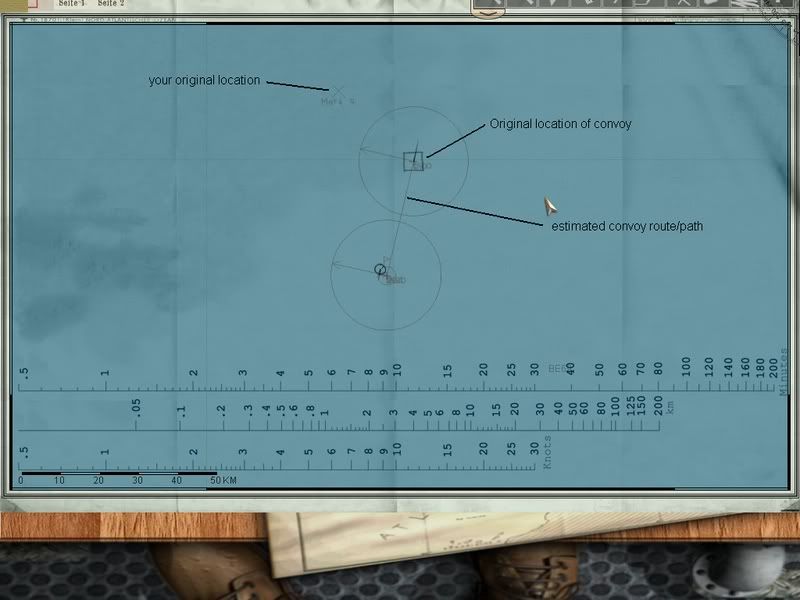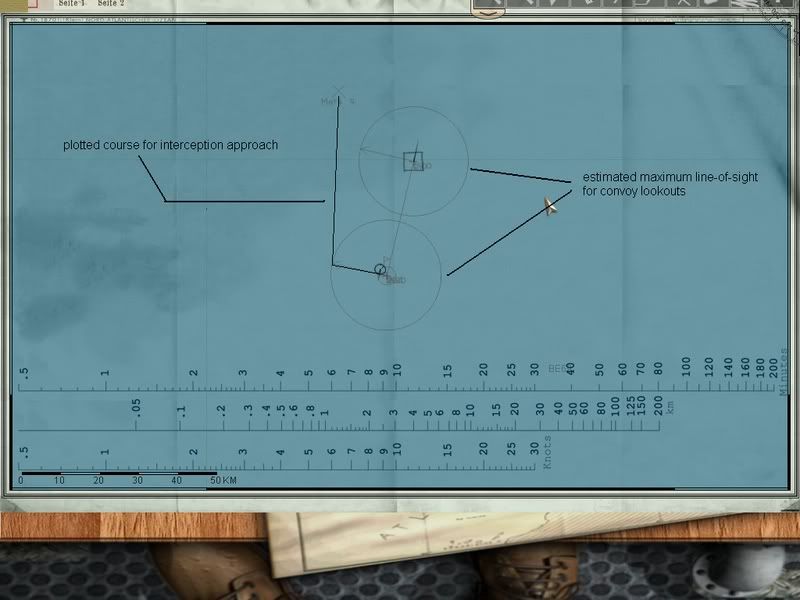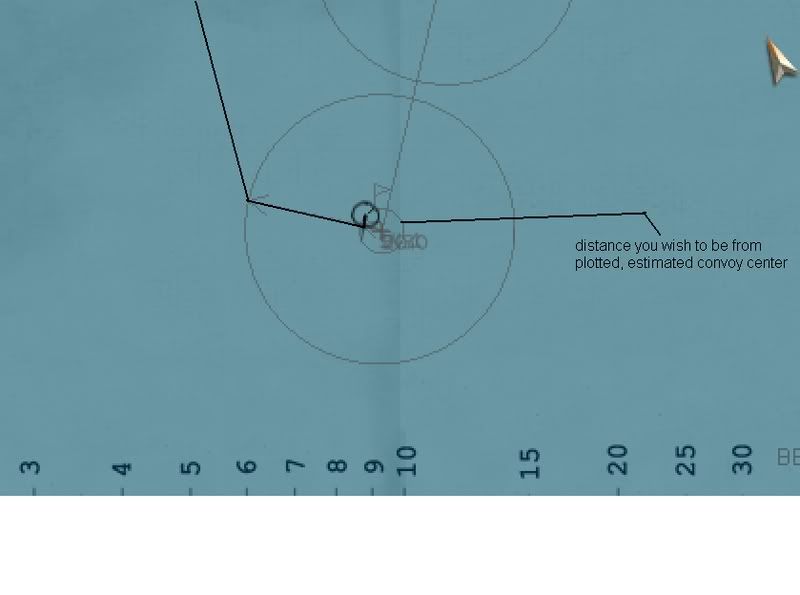Quote:
|
Originally Posted by Kapitan Edvard
I know I am no authority what-so-ever, but my problem with approaching a convoy at 2-3 knots is that I cant get into the convoy. I usually spot it some distance of, and really have to speed up to be able to collide with it, or else it just goes straight past me, at a large range.
|
This is kind of butchered regarding the images, but I just slapped it together as I'm on patrol at the moment. I'll try to do a better tutorial later for convoy interceptions.
The key thing is to get into position, unseen and unspotted,
before they reach you. If you try chasing after them you're virtually doomed to fail.
So, let's take one example: you've gotten a contact report (I'll cover running across one later, when it happens again for me :p )

To plot an intercept first you have to try determining the convoy's future path (this isn't foolproof, as convoys can, and will, make course changes as they travel). I use the ruler line and, starting at the middle of the convoy mark out a line colinear with the convoy's 'trail'. The length at this point is not important; just make it rather long to start. If you need aid in drawing a straight line, use the compass and click the center at the back of the convoy 'tail' and draw the radius directly over the convoy tail outwards.
The final length of the convoy path requires tweaking, and is determined by how far
you have to travel. Making it 25km long is no good if you're 300km away. Here's an example of how to determine the right distance: if the convoy is traveling 7kt, and you make the estimate length 75km long, if your distance to get there is 150km or less you're ok (since flank speed is faster than 14kt). You want to arrange it so you get in location no less than 18km in front (and once radar comes into play, that changes drastically!) to keep from being visually spotted. I normally shoot for 30km out, to give me time to make hydrophone checks as they advance to forewarn me if they've made a course change out of my line of sight.
Once you've decided on the length/convoy travel distance, mark two circles: one at the start and one at the end, each the same size. These are your line-of-sight warning areas. In clear daylight make them 18km. In rough weather maybe 12 - 14 km. At night, with no moon, you might get away with 8km. Bigger is better, you can't go wrong that way.


Once you've determined the line-of-sight area at the end point, you can plot your course. By plotting your course so that your final, pre-intercept turn is tangent to the line-of-sight circle you're doing your best to prevent the convoy's lookouts from spotting you as you race ahead to the ambush.
Your next course change is directly to the center of the last line-of-sight circle. How far you go in before your final turn is dependant on several things: weather, time of day, the escort size . . . your nerve.

I'll draw a second circle at the convoy path line end, its size the distance away from the convoy center I wish to be. That's normally been 2.000 - 3.000 meters out. Keep in mind that you've marked the convoy's path, and that path is for the
middle of the convoy. If it's four lanes wide, each 1km apart, the outer lanes will be 1.500 meters to each side of that path . . . and the escorts range even further outwards.

Once I reach that second circle I make my final pre-attack positioning. In this instance I turned to face back along the convoy path.
I wish I could have done a better pictoral job here, but hopefully this'll help give you one idea how to catch a convoy.
